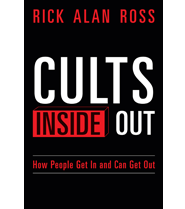‘Exmo’ Influencers Mount a TikTok War Against the Mormon Church
Published By admin
When Madeline Woodward discovered ex-Mormon influencers on social media, it was her first glimpse of people finding joy after leaving the Church of Jesus Christ of Latter-day Saints.
Woodward, a descendant of church pioneers, had struggled for years to reconcile her faith with church policies she viewed as antigay, discriminatory and troubling, like the polygamy of Mormon founder Joseph Smith.
After watching posts on TikTok and Instagram known as #exmo content, she realized she wasn’t alone. In April, she requested that her records be removed from church member rolls. Woodward, whose intense dedication to her faith previously led classmates to call her “Mormon Maddie,” had officially severed ties with the church.
Once among the world’s fastest-growing religions, Mormonism is facing a 21st-century reckoning, driven by social-media influencers—and the church is racing to counter them.
In video after video, an army of #exmo creators emphasize controversial aspects of LDS history, such as “death oaths” to protect temple secrets or a regulatory fine the church paid in 2023 for hiding the scale of its wealth. They question some of the Book of Mormon’s claims, pointing to a lack of archaeological evidence, dissect leaders’ efforts to modernize, and share snapshots of the happier lives they find outside the church.
“Creators gave me the final boost to take my name off the list,” Woodward said.
Younger generations have long questioned their parents’ faith, whatever the religion—and lately, many have aired their grievances online. Some religious officials have worked to harness the internet in their favor. In late July, the Vatican hosted more than 1,000 content creators for a two-day Jubilee for Digital Missionaries and Catholic Influencers, with an appearance from Pope Leo XIV.
Mormonism is particularly vulnerable to social-media backlash. Organized in 1830, it’s a relatively new religion—with documents detailing the peccadilloes of its early leaders that skeptics scrutinize. Mormon leaders manage their flock with a hierarchical and centralized style, rooted in conservative practices that have repelled some younger members. And former members who leave the church say they face judgment from others in their tightknit communities for their decision.
“Ex-Mormons used to be their own secret society,” said Alyssa Grenfell in Texas, who started questioning her faith about nine years ago and now has more than 1 million followers across her social-media accounts. “To become public about this—it’s like ‘Oh, my God, she went there.’”
The church declined to comment.
The church’s fight for relevance on social media comes as it battles a broader membership crisis. After decades of expanding its American base by 4% a year, official church rolls are now growing less than 1% annually in the U.S. Globally, church growth is bolstered by converts abroad, especially in Africa.
The portion of people in the U.S. who identify as Mormon has almost halved from the 1.8% they represented in 2012, according to the Cooperative Election Study, a survey of more than 50,000 Americans. Justin Turman, a former member who conducts church attendance surveys, has found that approximately 21% of the 17.5 million official members worldwide are actively involved in the church.
“Retention is the easiest way for a religion to stay robust,” said Ryan Burge, a professor of political science at Washington University in St. Louis who studies religion. “Mormonism has a retention problem,” even more so than many Christian denominations, he added.
To counter the #exmo narratives, teams of employees, pastoral officials at its Utah headquarters and even a paid ad agency are organizing a slate of pro-church influencers. They highlight positive perspectives on the Book of Mormon and encourage viewers to meet with missionaries.
Cultural trends like the hit reality show “The Secret Lives of Mormon Wives” and the #Tradwives movement, which has raised the profile of some Mormon families, have driven curiosity about the church. Some insiders are calling it a “Mormon Moment,” with a chance to draw new members, and the church’s reputation management department has tracked the interest.
Yet negative videos about the church vastly outnumber positive ones on social media, according to people familiar with the institution’s tallies of the content. Recent polling data of nonmembers studied by the church found that “cult” was the most common word people associated with the church, they said.
Content retrieved from: https://www.msn.com/en-us/news/us/exmo-influencers-mount-a-tiktok-war-against-the-mormon-church/ar-AA1LKHxt.






